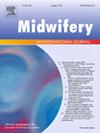Navigating the transition: Graduate midwives’ experiences with the implementation of a formal practice assessment tool
IF 2.6
3区 医学
Q1 NURSING
引用次数: 0
Abstract
Problem
New graduate midwives report dissatisfaction, stress and fear with a lack of structured clinical support and lack of personalised learning objectives. There is no practice assessment tool currently used to benchmark midwives practice in their graduate year.
Background
In Australia there is no program for graduate midwives that includes use of a performance appraisal tool to provide benchmarks of clinical performance against the professional practice standards. Such an instrument has the potential to prompt a discussion between assessor and new graduate and facilitate a critical reflection on practice.
Aim
The aim of this study was to explore graduate midwives experience of the implementation of a practice assessment tool.
Methods
This study used a descriptive qualitative design. Twelve graduate midwives were purposively sampled from one hospital in Australia and participated in focus group interviews. Data were analysed using an inductive approach.
Findings
Three themes were generated: The influence of a sociopolitical environment on professional development; a paradox of stability amid uncertainty and a catalyst for practice improvement.
Discussion
Pragmatic improvements for the assessment process including familiarity of the assessor, allowing time to adapt to new clinical areas and having transparent assessment schedules. Organisational factors need to be addressed to support optimal graduate development within the clinical environment.
Conclusion
The practice assessment tool when used in the correct context and by suitable assessors is an appropriate tool that can be used to provide objective feedback to graduate midwives and prompt reflective practice.
求助全文
约1分钟内获得全文
求助全文
来源期刊

Midwifery
医学-护理
CiteScore
4.50
自引率
7.40%
发文量
221
审稿时长
13.4 weeks
期刊介绍:
Midwifery publishes the latest peer reviewed international research to inform the safety, quality, outcomes and experiences of pregnancy, birth and maternity care for childbearing women, their babies and families. The journal’s publications support midwives and maternity care providers to explore and develop their knowledge, skills and attitudes informed by best available evidence.
Midwifery provides an international, interdisciplinary forum for the publication, dissemination and discussion of advances in evidence, controversies and current research, and promotes continuing education through publication of systematic and other scholarly reviews and updates. Midwifery articles cover the cultural, clinical, psycho-social, sociological, epidemiological, education, managerial, workforce, organizational and technological areas of practice in preconception, maternal and infant care.
The journal welcomes the highest quality scholarly research that employs rigorous methodology. Midwifery is a leading international journal in midwifery and maternal health with a current impact factor of 1.861 (© Thomson Reuters Journal Citation Reports 2016) and employs a double-blind peer review process.
 求助内容:
求助内容: 应助结果提醒方式:
应助结果提醒方式:


